Fly Selection- as explained though a bag of Doritos
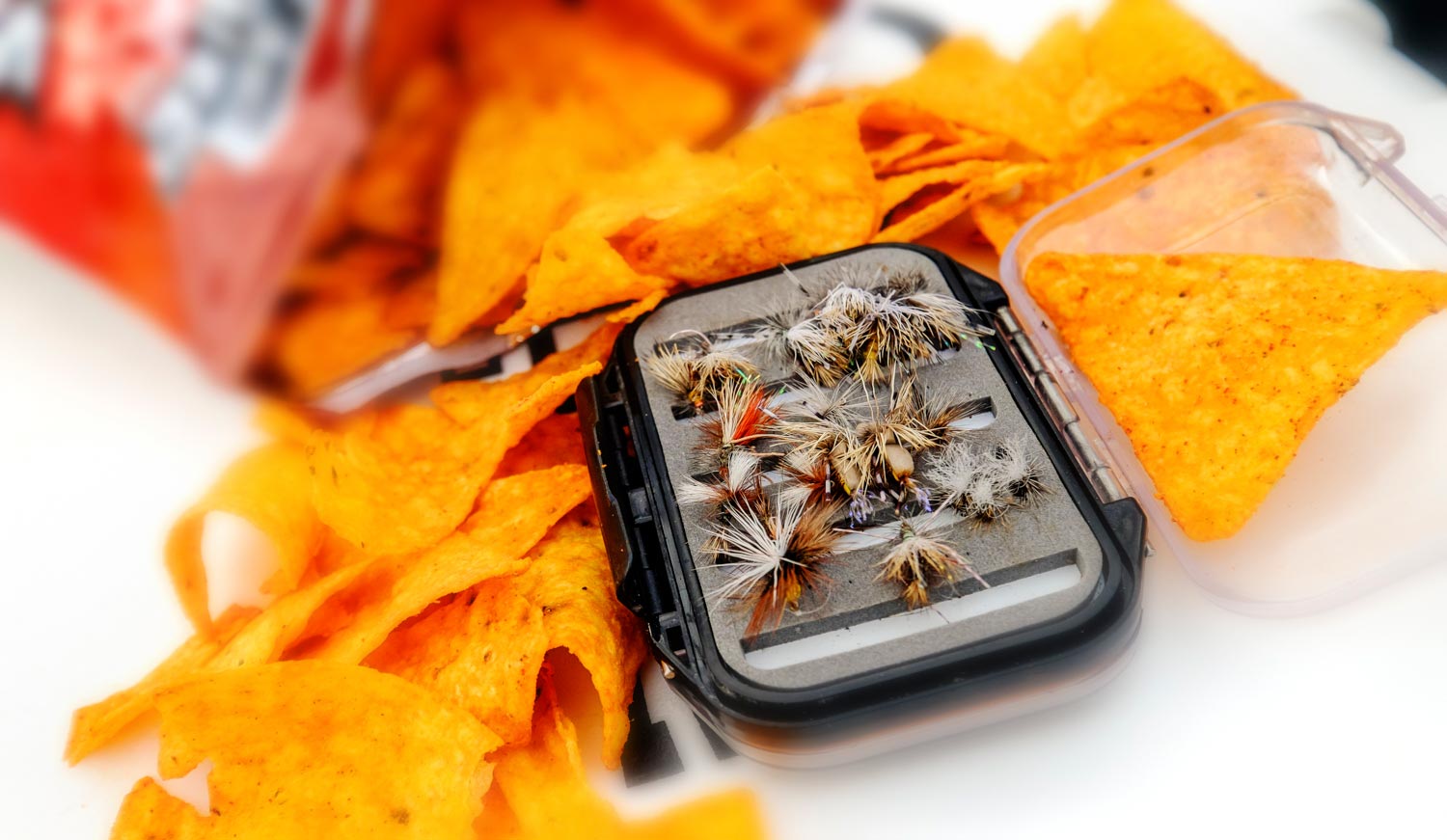
By Kyle Wilkinson
What’s more important, fly choice or presentation?
I’ve said it before and I’ll say it again, when it comes to trout fishing (in my opinion) most fish are going to care WAY more about a perfect drift than the exact ‘perfect’ fly- and this is coming from someone who makes a living on the pressured waters of Colorado’s Front Range. The analogy I use for this is with a Doritos chip. See if you can follow me on this one.
You’re hungry and thinking some chinese food sounds pretty good. While waiting on the chinese food to get delivered, someone shows up at your house with a bag of Doritos, opens them up and sets them on the table in front of you. Are you going to eat a few?
I’d say the answer is probably yes.
Even though Doritos might have been the last thing in the world you were thinking about eating, the fact that they were presented in such a way that you: A) had to essentially expend zero effort to eat a few; B) ‘make sense’ as a food source to us; and C) based off of memory taste darn good; the decision to dig in becomes an easy one.
So how does this relate to fly selection, you ask? Simple.
On the waters I fish, throughout the year we see all the standard Western hatches- BWO’s, PMD’s, Caddis, Stoneflies, Tricos, etc. With the wealth of information available online these days, figuring out what bugs are hatching during a certain time of the year has been made pretty simple. What I encourage you all to do – particularly the newer anglers reading this – is to turn down the dial on fly selection and turn up the dial on learning how to fish your flies perfectly.
Right now in Colorado, it is basically a midge and BWO game from a hatch standpoint. Read any local fishing report and you’re going to see many of the same flies being recommended – jujubaetis, Barr’s BWO emerger, Stalcup’s Baetis, Rainbow Warrior, Two-Bit Hooker, Pheasant Tail, etc. (There will also be a bunch of midge recommendations, but for now we’ll focus on the mayfly side of things.) So which one do you use? My answer:
Read More »Guiding Tip: Set Your Client Free to Build Confidence
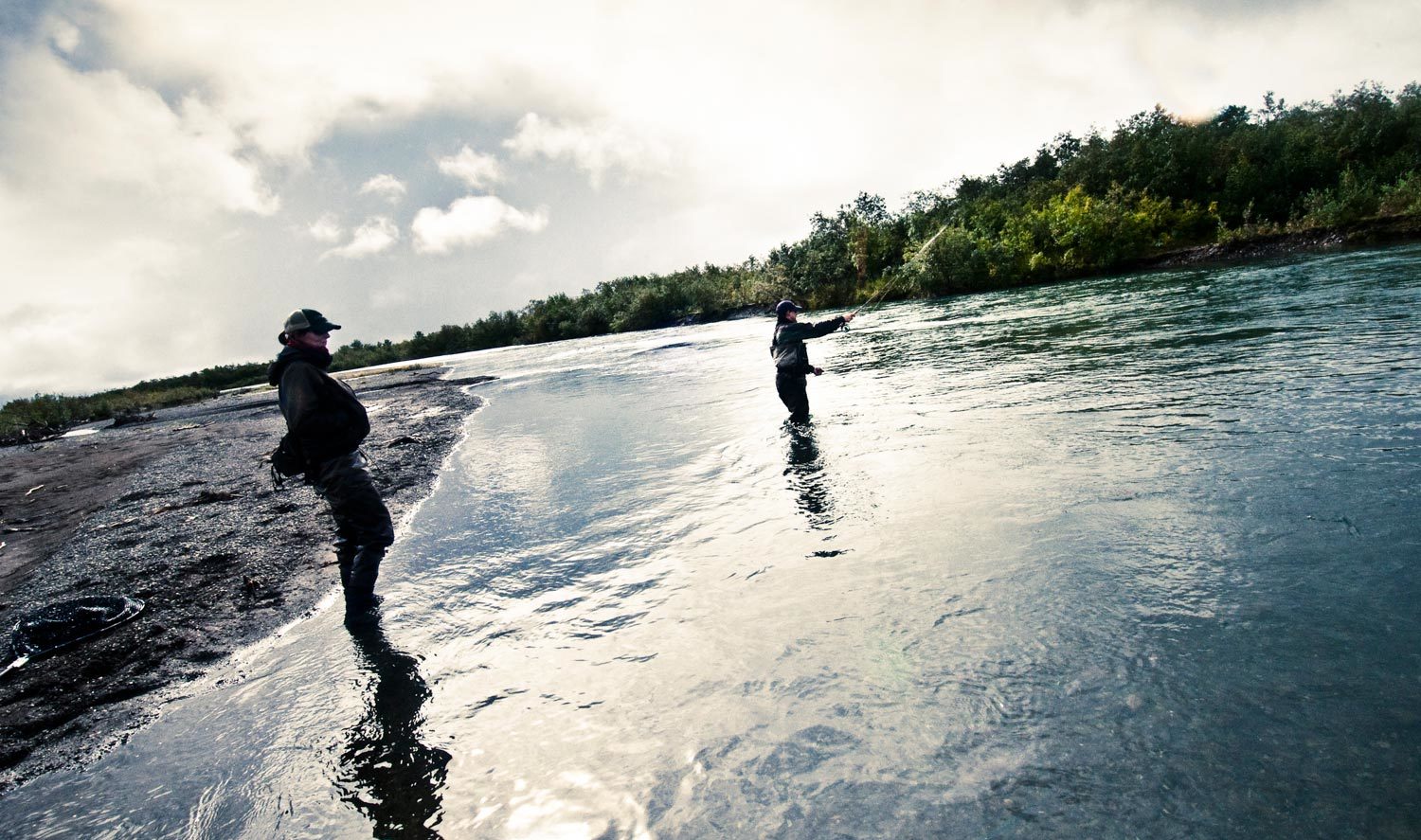
THIS POST IS FOR ALL THE PROFESSIONAL GUIDES OUT THERE WHO GIVE THEIR CLIENTS EVERY THING THEY’VE GOT EACH AND EVERY DAY. IT’S FOR THE PERFECTIONISTS, WHO TRULY BELIEVE FLY FISHING CAN NEVER BE 100% MASTERED AND ALWAYS SEE ROOM FOR IMPROVEMENT IN THEIR OWN PROFESSIONAL TEACHING SKILLS.
I’ve taken great pride over the years with my hands on style of trout guiding. When you take the time to explain the little details to your clients, and freely share what’s going on in your head, it really makes a big difference in them understanding the big picture. I’ve always believed catching fish should take a back seat to learning the how-tos of fly fishing. I’ve never seen much value in a client catching fish during a guide trip, if they can’t go out and replicate it on their own without me. It wasn’t until a few months ago, in fact, that I strayed away from my familiar guiding routine of holding onto the reigns.
Read More »3 Tips For Netting Trophy Trout From a Drift Boat
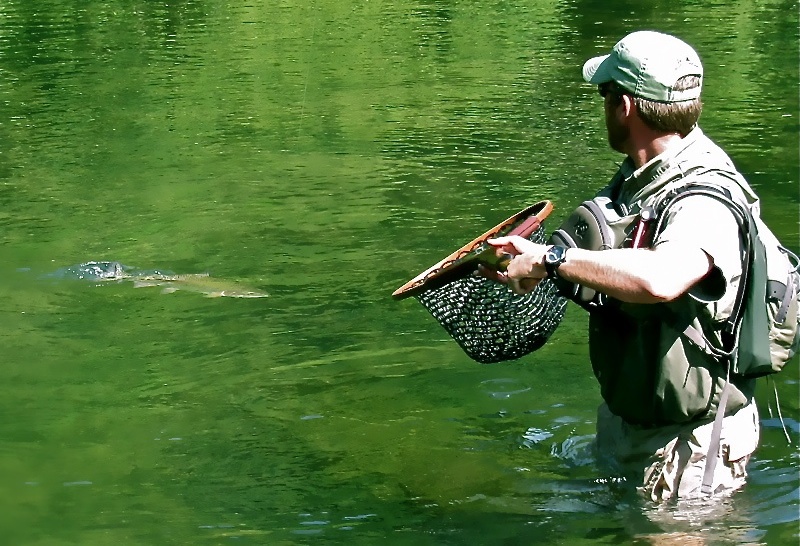
So you’re floating the river in a drift boat and your buddy just hooked into a trophy trout. What should you do next to ensure you land that trophy? Below are three tips for increasing your chances at netting that fish of a lifetime.
1. WHEN THE OPPORTUNITY PRESENTS ITSELF GET ALL YOUR FLY LINE ON THE REEL.
After you’ve set the hook, made a few strips to keep tension, and your jaw has dropped to the ground after seeing the giant beast at the end of your line, your next objective will be to find a good time to get all that excess fly line onto the reel. The last thing you want is the trophy fish making a blistering run, and your excess fly line catching on your boot, thigh brace, or rod butt resulting in a break off. When the trophy settles down and holds in a stationary position during the fight, this is when you should take the opportunity to reel in and get all of your fly line on the reel. Doing so you can let that $300 fly reel with a butter smooth drag to do its job.
2. USE YOUR DRIFT BOAT TO BLOCK DANGER ZONES DURING THE FIGHT.
Don’t keep your boat anchored up during a battle with a trophy fish expecting the angler to do all the work. Often the trophy will make a big run downstream or upstream, which will drastically lower the ability of the angler to control the fish. If you’re on the oars
Read More »Using XL Trout Beads As Attractors In Your Tandem Rig
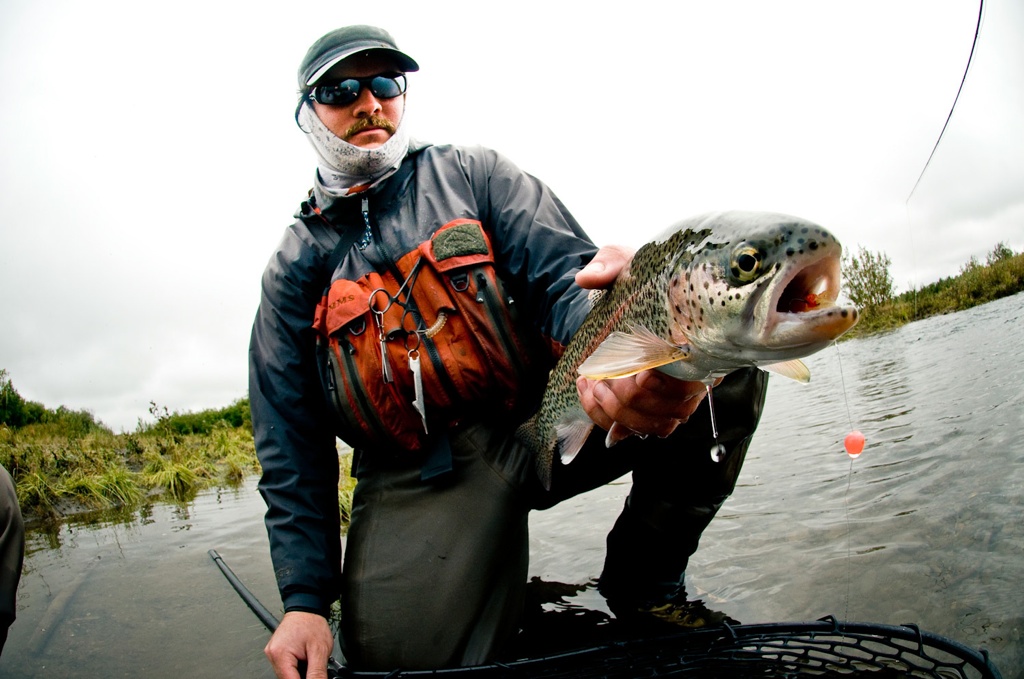
Back in 2006, I spent a season guiding in Alaska at Mission Creek Lodge.
It was a great experience and a hell of a lot of hard work, but I held my own and ended up representing well for Southeastern fishing guides. That doesn’t make me an expert on Alaska fishing by any means, particularly when compared to bad ass veteran alaskan guides like Andrew Grillos, TJ Zandoli, and Nathan Cornelius. That season in Alaska I was blessed with the opportunity to pick the brains and learn from some of the best bush guides in the area. One lesson I learned right off the bat was using an extra large attractor trout bead as my lead fly in my tandem bead rigs. Point being, matching the hatch and size of the eggs isn’t the only factor that plays into getting big trout to eat. The attraction factor you get by using a 10-12mm trout bead often sparks initial interest from big bows, persuading them to move in for a closer look. In most cases they’ll end up eating the smaller more appropriately sized bead, but it became very obvious to me how important a role, big attractor beads played in creating hookups.
Since then, I’ve experimented using big attractor beads on other trout waters in the United States. I often fish a 10mm trout bead in the top position with
Read More »Fly Fishing Bass Ponds 102
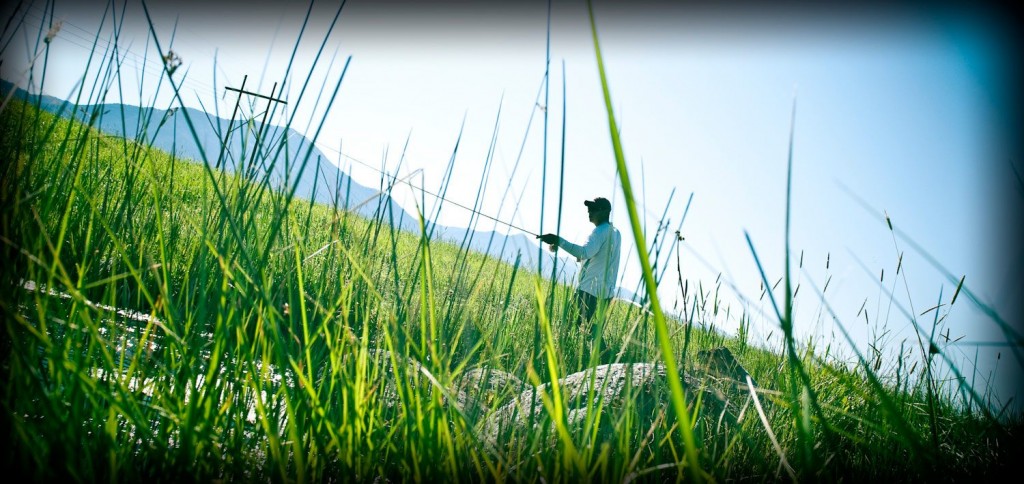
UNDERSTANDING DIFFERENT TYPES OF STRUCTURE AND HOW TO FISH THEM
I promised everyone I’d write a Fly Fishing Bass Ponds 102, if people showed enough interest from my 101 post. I was blown away from the emails and comments that flooded in, after the first post went live. I covered quite a few topics in the first post but here’s a few more tidbits of information for all you warm-water fly fishing junkies out there.
As a little kid, I was a bass fishing maniac. A good friend of my Father’s fished a lot of tournaments for fun and he took it upon himself to take me under his wing, and teach me the skills I’d needed to become a proficient bass fisherman. One of the greatest things he did during his mentorship was take me to several professional bass fishing seminars. On several different occasions, I had a front row seat to listen to Hall of Fame bass fishing legends like Bill Dance, Denny Brauer, Rick Clunn, and Larry Nixon. Notepad and pen in hand, I wrote as fast as I my fingers would move as the pros talked about how they consistently caught bass. It was at these seminars that I learned the behavior of bass and how to catch them. If you want to improve your warm-water fishing, I highly recommend attending a seminar in your area. Most are reasonably inexpensive, and If you don’t walk away with more knowledge afterwards, you either have an ego that needs to be checked, or you weren’t listening. Most of what you’ll find the professionals talking about is catered towards fishing large lakes, but almost all of the information can be converted and used for fishing on bass ponds.
One recurring theme I noticed is that everyone of those bass fishing legends talked in great detail about how important it was to understand and locate structure. Talking about bass structure is no different than me talking to my clients about reading trout water. Both are critical for anglers, because it allows them to quickly locate hotspots, but more importantly, it allows anglers to distinguish productive water from unproductive water. Structure is anything in the water that fish are drawn to that allows them to live comfortably and feeding efficiently. Structure serves two purposes for bass. One, it provides habitat that becomes a magnet for their forage food, and bass always live close to their food sources. Two, it provides highly efficient ambush points for bass to camouflage themselves so they can feed easily. Structure can be above the surface, on the surface or below the surface. Just remember that there’s two main types of structure. The first is cover, such as lily pads, weed beds (ex. hydrilla or millfoi), overhanging foilage along the banks, docks or floating or submerged wood cover. The second form of structure is irregularities of the bottom and composition of the water you’re fishing. Examples of this would be creek channels, flats adjacent to deep water, edges (sand or mud bottom substrate changing to rock or deep weed beds meeting open water). If you’re lucky enough to ever find both types of structure together you’ve hit the jackpot. It should be loaded with a high concentration of bass, and should also hold fish pretty much year round. Search out, locate and spend your time focusing on fishing these two types of structures, and you’ll eventually find success. Again, this concept is just like trout fishing, where I instruct my clients to pass over empty or dead water and search out prime habitat that provides trout what they need to survive. The only time structure can be thrown out the window is when bass are chasing baitfish out in open water. It’s not really a problem in bass ponds though, because there’s usually not enough water available, but keep it in mind, if you’re fishing larger water in a boat, and you see bait fish activity on the surface and sporadic topwater bites, it should be a clue that bass are chasing baitfish. However, even in this scenario, there’s a good chance structure will be located near by because bass use it to corral and concentrate the schools of baitfish to feed on them more efficiently. In ponds bass usually corral forage food to structure or to the banks.
Aquatic Vegetation
Generally, there’s two kinds of aquatic vegetation you should locate and fish. The first type are weed beds that root from the bottom and grow to the surface, forming mats. Examples of this kind of aquatic vegetation would be lily pads, hydrilla or milfoil. You’ll want to be fishing fly patterns here that have good weed guards so you can retrieve your fly without snagging or picking up vegetation every cast. I focus first on presenting my fly to the edges of the surface vegetation, where the weeds stop and the open water begins. After I do that, I’ll then cover the vegetation with follow up presentations inwards. Working my way farther and farther into the vegetation, with each consecutive cast. Don’t make the mistake of thinking, that just because the weeds are thick that the bass can’t see your fly well enough to eat it. I’ve caught some of my largest bass on ponds in places like this. I’ll never forget a nine pound bass I landed, that busted through a solid foot of hydrilla to eat my fly. There’s no way it could have seen my fly, but it utilized its inner ear and lateral line together and that allowed it to pickup enough subtle high and low frequency vibrations to track my fly in the water, just like state of the art radar or sonar equipment. Lastly, look for openings or pot holes in surface vegetation mats. Work your fly over the mat and when you get to the open spot, let it rest or sink into the hole. Bass often will hold close to the locations, but it’s also one of the few spots you can present your fly below the vegetation in these areas, and that will allow you to get your fly closer to the bass and increase your chances of hooking up. My two favorite flies for fishing surface vegetation are weedless frog patterns and long weedless worm style flies (long zonker or palmered chenille flies). One main tying material I use for these worm patterns are wide shoe lace strings that you can purchase at your local sporting goods or foot locker store. They usually have them available in most colors, even fluorescent and chartreuse. One day I’ll showcase the fly pattern on the blog. For now, hopefully it will spark enough interest for you to experiment tying a similar version yourself.
The second form of aquatic vegetation you’ll run into is deep water weeds. You won’t be able to see it but you’ll notice tidbits of it fouled on your fly after retrieves. They usually are found in five to ten feet of water. Sometimes more or less depending on how clear or muddy the water is. Theres always a little space between the weeds and the bottom, and that’s where the bass like to hold. A tungsten cone head long worm style fly does a great job of working through the grass without picking it all up. It’s tedious fishing, but there are times when the bass will be concentrated in this deep water vegetation on ponds and you’ll find great success if you
Read More »Rob Smith’s Rusty Enema
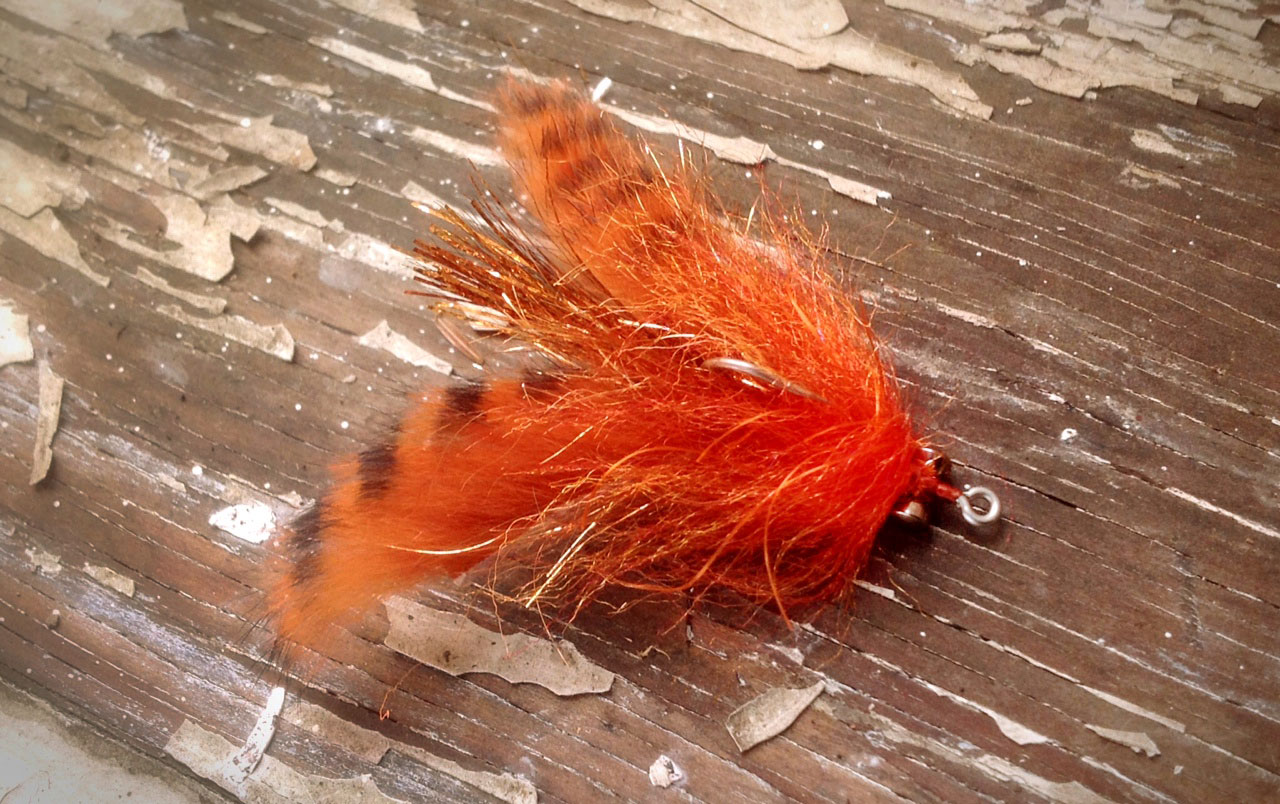
THE STASH IS BACK!
Rob “The Stash” Smith is back to share one of his favorite redfish flies with us. The Rusty Enema is a proven producer anywhere redfish are found. It’s a great attractor pattern that pushes a lot of water, which is like ringing the dinner bell for redfish in dirty water. Put a couple of these in your box to keep you catching redfish on a regular.
Watch the video to learn how to tie this fly and find out how it gets it’s name.
Read More »Bruce Chard’s Palolo Worm
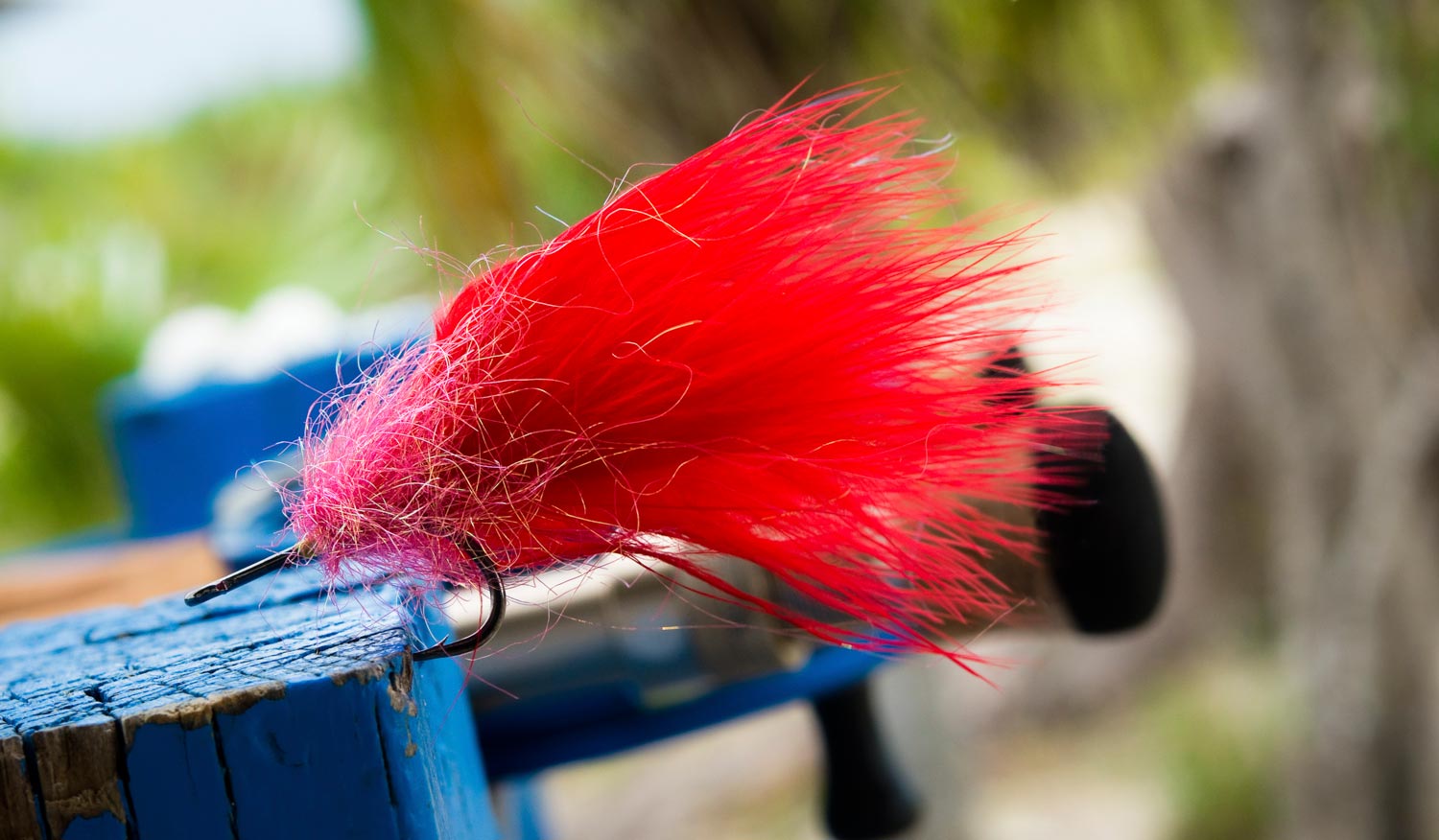
THE PALOLO WORM HATCH IN THE FLORIDA KEYS TRULY MUST BE SEEN TO BE BELIEVED.
Tarpon go completely crazy when these bright red worms pour out of the sand by the millions. The fish gorge themselves on worms and quite a few of those worms are cleverly tied imitations. It’s the fishing opportunity of a lifetime.
My good friend Captain Bruce Chard has this hatch wired. I’ve fished the hatch with Bruce and his success rate is astounding. Today he’s going the share the simple but effective fly that makes it happen. There’s not much to the tie. Anyone can pull it off, but when you see it in action it looks like a million bucks.
Watch the video and learn to tie Chard’s Palolo Worm.
Read More »How’s your double haul?
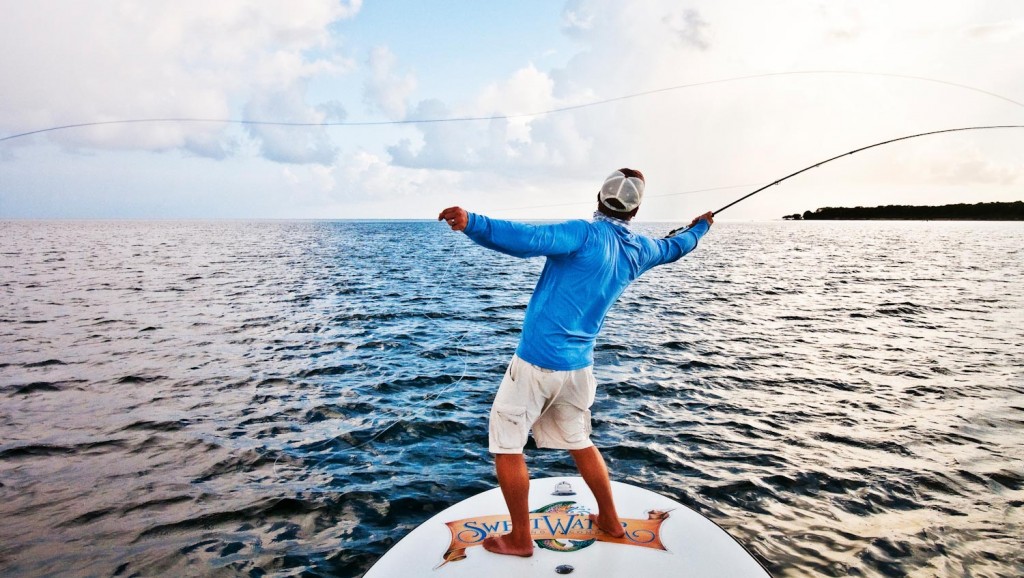
Whether in saltwater or fresh, most experienced casters employ the double haul.
It’s possibly the best technique for creating line speed and generally energizing your line during the cast. It’s also a great way to create casting problems when done incorrectly.
One of the fundamentals of the double haul that commonly causes problems is the ratio of the haul to the line being carried by the caster. On a short cast where you may only carry thirty or forty feet of line, the length of your haul, that is the amount of line you pull through the guides with your line hand, may only be a couple of feet. On a cast of seventy or eighty feet be prepared to spread your wings.
Tall casters with long arm spans hold a decided advantage here. When it comes to casting the whole line it’s good to be well over six feet but the truth is that most of us don’t take advantage of the reach we have. If a picture is truly worth a thousand words, this photo should make my point.
My friend Joel Dickey has a powerful and athletic double haul. Better than
Read More »Die With a Human Heart by Jon Tobey

Today, we are pleased and honored to bring you an amazing work of fly fishing fiction by Jon Tobey of Gointothelight. Jon is an accomplished writer and his story “The Very Cruelest Thing” was a huge hit as a Saturday Shoutout. We knew you wanted more.
Die With a Human Heart
I
Nathaniel hated re-entry. It was the same endless elevator free-fall feeling he had when they pulled him off the bottom. It was the last thing he remembered before he died, lungs crushed to the size of fists. He longed for the clean pure air of a high meadow won after a long hike. The trees lit up with alpenglow as soft and bright as an artist’s brush. The patient, patient trout waiting through the decades to rise to a well-presented fly. For one moment to be bound together – these living things in a bouyant dance, and to hold one in his hand as hydraulically perfect and functionally timeless as the monstrosity in his chest.
The red rocket came down fins first, lowering itself on a pillar of flame. It was the most stupendous thing Izaak had ever seen. Rockets left every day, but only a few came back every year. He held his mother’s hand and looked out the window. “Grandfather is here!” Mother looked down at him and smiled her worried smile. It seemed the rocket had barely hit the ground when a ramp opened and a group of rough-looking men tumbled down the ramp. A few went off alone or with other men, but most looked around expectantly. Izaak let go of his mother’s hand and raced out the door. “Be careful, no running!”
Nathaniel recognized his grandson from the ever-rarer vid chats, but was flummoxed when the boy ran up and threw himself at him, not having touched another human in what, thirty years? When he saw Clare across the apron, shimmering in the heat, a vision of her mother, he wrapped his arms around the boy and lifted him off the ground, dropping his bag.
“You look so much like your mother,” he said when she walked up.
“Space will do that to you,” she replied. They looked at each other and he smiled. He knew what it was like to be bursting to say the right thing and say the wrong. It conveyed so much more information.
He held out his hand to the man to her left, “Daniel.” Of course he’d “met” him on chat, but this was the first he’d personally met the man who married his girl, the father of his grandchild.
“Nathaniel.” Nathaniel found Daniel’s grip offensively limp. “It’s so good to meet you.”
“Do you want to go fishing? I’ve been practicing, I have just the spot. I know everything: how to pick a fly and tie it on and cast and spot the fish and everything.” Izaak seemed to speak without breathing.
“Aren’t you tired, Nathaniel?” asked Clare. He would have preferred “dad,” or even “father.”
“Hell, no.” His eyes were still on Clare’s. “I’ve been sleeping for three months, and dreaming about fishing the whole time. You coming, Daniel?”
Daniel looked a little lost. “Um, well, not much of a fisherman, and besides,
Hard Driving

By Jason Tucker
“A little humor folks”
It’s Friday at last.
You have worked hard, saved up, finagled the time off from job and family obligations for this trip and now it’s here. The bite is on, the vehicle is loaded and you are making the long trek to trout country.
When you start out everything is ok. Spirits are high, the radio blares and the adrenaline flows. But after a few hours reality sets in. This is going to be a long drive. You are tired out from a long week of work, packing, and March Madness. Three hours into the drive is when your eyelids first start to drift south. You are barely halfway there. You turn up the radio and hope for the best, but in the monotonous white noise of the road you can see it all clearly in your minds eye- you slumped over the wheel, your SUV slowly arcing in a barrel roll, followed slowly by your drift boat, your eyes opening as a Slim Jim hits you in the face, followed by a ton of wreckage.
Such tragedy, and it doesn’t have to be this way. Here’s some tips for staying awake on those long drives to hot fishing, late at night.
Music: Radio, CD’s (as if), your iDevice, or satellite radio, all can be a good source of good road energy, but when the rubber really hits the late night road and the eyelids are drooping it can fall short.
Suggestion: Comedy channels on satellite radio- the ever changing comedy keeps you engaged, and it’s hard to nod off during a belly laugh.
Drinks: not alcohol, we’re talking cold energy. You could go old school- Coke, Mountain Dew, or my favorite, Dr. Pepper. New school is the vast array of energy drinks. Red Bull is the Cadillac of these judging by the price. Monster is more authentic for the majority of us fly guys- less expensive, lots of choices, and a good zip for the dollar. Are you really pushing the night driving envelope? Top off with a 5-Hour Energy or Fish On.
Snacks: crunchy snacks can keep you engaged and your mind alert, at least for a while. I’ve heard of everything from mint gum to sour candy to Doritos. The ultimate however are sunflower seeds, which are appearing in a growing variety of flavors. The combination of flavor, the work it takes to hull a seed in your mouth, spit the hull, and the ultimate but tiny reward work together to engage the taste buds and mind, keeping you awake.
Talk Radio: That’s right. It takes two forms. Don’t go for your comfort zone, unless sleep at 70 mph is your thing. I’ll break this down into two forms.
Jesus Radio: There is no shortage of religious programming in America. It encompasses everything from prosperity gospel types like Joel Osteen, to your basic bible pounding, to the most vehement hellfire-breathing screed- pick your poison, examine your soul, and stay awake. Whether you totally agree, or are a philosophy student who likes to argue, Jesus radio can keep you awake for at least a hundred miles. More if you’re in the South. Caution:
Read More »